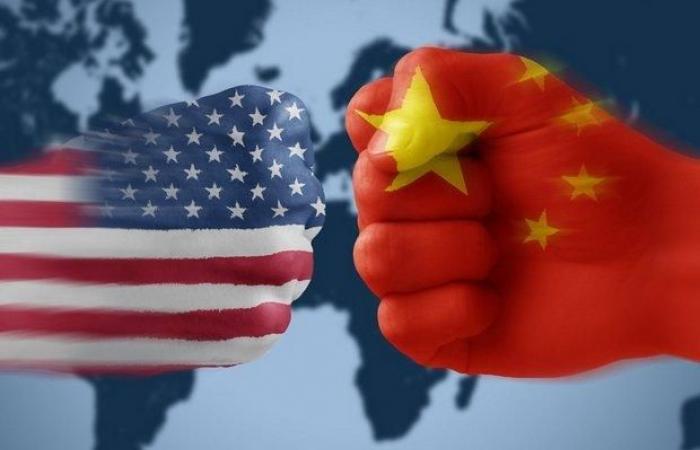Credit Suisse analyst Zoltan Pozsar has published a new analysis in the series dedicated to a new Bretton Woods agreement (Bretton Woods III), in which raw materials will dictate the new world order, an analysis considered by many economists to be one of the most important since the end of 2022.
Pozsar shows that the world is moving towards a multipolar order “built not by the heads of the G7 states, but by the “G7 of the East” (the heads of states of the BRICS group)”, meaning Brazil, Russia, India, China and South Africa. The analyst says that, given the information on the submission of applications to join BRICS by Saudi Arabia, Turkey and Egypt, we can talk about the emergence of a new G7.
“In the next 3-5 years, China is ready to work together with the countries of the Gulf Cooperation Council in the following priority areas: the creation of a new paradigm of multidimensional energy cooperation, a model in which China will continue to import large amounts of energy in the long term oil from the GCC countries and will buy more liquefied gas. We will strengthen our cooperation in the engineering and services sector, but also in the transport, storage and oil refining sector. The platform of the Shanghai Oil and Gas Exchange will be used for yuan transactions for oil and gas, and we will also be able to make progress in the Chinese digital currency project,” Xi Jinping at the China-Gulf Cooperation Council Summit.
The author focuses on Chinese President Xi Jinping’s speech at the recent China-Gulf Cooperation Council Summit, which, in Pozsar’s view, speaks volumes about Xi’s plan to defeat the West in the race for global economic dominance. “Investors in the G7 should be careful – not only because oil billing in yuan will reduce the strength of the dollar, but also because dependence on raw materials will mean more inflation for the West,” says Pozsar.
Analyzing the 3-5 year timeframe mentioned by Xi Jinping, Pozsar says that in market terms this means that in five years oil and gas will be sold not only against dollars but also against yuan, and that part of oil and gas will no longer be available at low prices (and in dollars) to the West, because they will be contracted by the East.
“My sense is that the market is beginning to realize that the world is moving from unipolarity to multipolarity politically, but the market must also realize that in the coming multipolar world strong currencies will have less strength, and the biggest force will be that of raw materials, and the rate of inflation in the West will be higher.”
Oil vs. Arms vs. oil against emancipation
Pozsar draws a comparison between President Franklin Delano Roosevelt’s approach to his relationship with King Abdul Aziz Ibn Saud and President Xi Jinping’s approach to Saudi Arabia. At that time, the USA was dealing with “a Middle East that had just begun to develop”. The West then secured the flow of oil from the Arab states in exchange for the security provided by arms deliveries and in exchange for ensuring stable income for those monarchies.
“Back then, liquidity and security were the most important for that region; today, respect for this region is more important for the Middle East”, says Pozsar, who shows that Beijing is offering more respect, while Xi Jinping talks about “a new paradigm of multidimensional energy cooperation”. Pozsar shows that Xi’s proposals for the Gulf monarchies do not only mean oil for cash and weapons, but also investments in the region and cooperation in strategic sectors of the economy. It is oil versus development (factories and jobs), not oil versus weapons, and China’s proposed New Silk Road project meets many of the criteria of Saudi Arabia’s Vision 2030.
“China is already the largest customer for oil in the Gulf Cooperation Council countries and will buy even more in the future, and China wants to pay in yuan in the next 3-5 years. Xi Jinping mentioned this not on the first day of the Summit, when he met with the Saudi king, but on the second day, when he addressed the leaders of all the GCC states.”
“When oil from the Gulf goes to China and when it is paid in yuan, we are talking about the beginnings of the petroyuan,” writes Pozsar.
The Gulf countries will have many opportunities to spend their oil yuan: clean energy infrastructure, cloud computing, artificial intelligence, 5G and 6G projects, cooperation in space exploration – to name just a few of the areas mentioned by the Chinese president himself.
Pozsar also points out that the People’s Bank of China reported an increase in gold reserves for the first time in three years. “Why does it matter that Beijing bought gold? Because at the 2018 BRICS summit, China launched yuan-denominated oil contracts on the Shanghai Energy Exchange, and since 2017, the yuan is convertible into gold on the Shanghai and Hong Kong exchanges. Gold convertibility beats dollar convertibility,” writes Pozsar.
Xi also talked about the Chinese central bank’s digital currency. “In Uncle Sam style, China wants more oil from the Gulf, wants to pay in yuan, and wants the Gulf monarchies to accept the Chinese digital currency as well.”
Since this year, Russia has been selling oil to China against yuan. In India, Russia sells oil in Emirati dirhams. India and UAE negotiate gas and oil payment in dirhams for 2023. China asks Gulf countries to use Shanghai exchange to sell oil to China for yuan starting in 2025. This is the end of the petrodollar and the beginning of the petroyuan,” writes Pozsar.
US may lose OPEC to China
China also signed a Strategic Partnership Agreement with Iran, a 25-year deal in which China commits to invest $400 billion in Iran’s economy in exchange for a steady flow of oil and acceptance of payment in yuan. Russia and Venezuela already accept payment in yuan. “Russia, Iran and Venezuela have about 40% of the world’s proven oil reserves. The Gulf countries also have 40% of the world’s proven reserves (half are in Saudi Arabia) and are being courted by China to accept payment in yuan in exchange for transformative investments in Arab economies,” writes Pozsar.
“The United States has sanctioned half of the OPEC states, which hold 40% of the world’s oil reserves, and lost these states to China, while China is courting the other half of OPEC with offers that are hard to refuse,” writes the Credit analyst. Switzerland.
The remaining 20% of the world’s oil reserves are in North and West Africa and Indonesia. North Africa is now dominated by Russia, West Africa is dominated by China, and Indonesia has its own rare metal agenda for batteries.
The Debt Trap and the Diplomacy of “Emancipation”
Chinese investment strategy has had an important role for Beijing not only in oil exporting countries. It is called “debt trap diplomacy” and many countries are forced to favor China in the geopolitical landscape, not being able to repay the loans received from China to finance national development projects. Forbes reports that 97 countries in the world are in debt to China. The most indebted countries are in Africa, but also in Central Asia, Southeast Asia and the Pacific. Pakistan owes China $77.3 billion, Angola owes $36.3 billion, Ethiopia $7.9 billion, Kenya $7.4 billion, and Sri Lanka $6.8 billion.
The relationship with the Gulf countries is different, because Beijing offers these states “emancipation”, as Pozsar writes. “It is the model of a farm – until now, I gave you chicken and vegetables, and you prepared the soup for five stall restaurants, but from now on I will prepare the soup and you will have to import it in a can – my oil, the places my work, your expenses, our raw materials, your problems”, writes Pozsar.
The first victim of this model of dependence on raw materials is the German giant BASF, which had to “permanently” reduce its production capacities in Europe after opening the first plastics plant in China.
BRICS strategy
China is not the only country playing the commodity dependency game. At a BRICS summit in June 2022, President Vladimir Putin said that “work is underway to create an international reserve currency based on our national currencies”. The project will rival the IMF’s special drawing rights. The yuan entered the IMF’s special drawing rights basket in 2016, along with the dollar, the pound sterling, the yen and the euro.
Pozsar cites Sergei Glaziev, tasked by the Eurasian Economic Union with creating a reserve currency. “If a country uses some of its natural resources to support the new economic system, then its weight in the basket of the new common currency will increase accordingly, giving that country more foreign exchange reserves and greater borrowing capacity,” says Glaziev , quoted by Pozsar.
“The BRICS countries and other interested countries need to discuss the creation of our independent financial system – whether it will be based on the Chinese currency or something different. We need to debate this”, said Serghei Storceak, the president of the Russian development corporation Vneșeconombank.
Broad rather than limited participation is expected in this project, especially after Turkey, Saudi Arabia and Iran applied for BRICS membership. In addition, the Shanghai Cooperation Organization offered dialogue partner status to Saudi Arabia and Qatar (which holds half of the Gulf Cooperation Council’s gas reserves) and began accession procedures for Iran in 2022.
“The China-Gulf Cooperation Council summit is one thing, and the strategic partnership between China and Iran is another, but the fact that both Saudi Arabia and Iran are simultaneously applying to join the institutions of a multipolar order – BRICS and the Shanghai Cooperation Organization – plus the idea of a commodity-based BRICS currency that would see BRICS countries supporting the organization’s cause with their natural reserves should worry Western investors in the G7, as these trends could keep inflation and interest rates high for the rest of this decade”, writes Pozsar.
The new paradigm
“The new paradigm brings the theme of “emancipation”. Both Western and non-sanctioned OPEC states will adopt a model where they will not only sell oil, but also refined products and other high-value-added petrochemicals,” writes Pozsar.
The analyst also writes that the increase in global oil production is due to shale oil and tar sands in the US and Canada or other unconventional resources. Saudi Arabia has restricted production expansion until 2025, while America’s largest shale oil company said expanding production would lead to drastic cuts in investment. “It appears that if the US does not nationalize shale oil reserves and start drilling to increase production, then in the next 3-5 years we will have an inelastic supply in the oil and gas market,” writes Pozsar. This scenario will make the world oil market vulnerable to China’s oil “emancipation” proposal.
The new paradigm will be established to the detriment of the petrochemical companies and refineries of the West, to the detriment of the economic growth of the Western countries, which will produce less and less domestically and face increasing inflation as they begin to rely on on imports from the East.
The analyst Zoltan Pozsar also draws attention in his analysis that central banks should also look at inflation through a geopolitical lens, through the lens of natural resource nationalism and through the lens of the “BRICS currency” project, because they (after the pandemic, the problems on the supply chains supply and the war in Ukraine) will be the shocks that will keep inflation high in the West and force central banks to raise interest rates beyond 5%.
Tags: petrodollar beginning multipolar order
-






